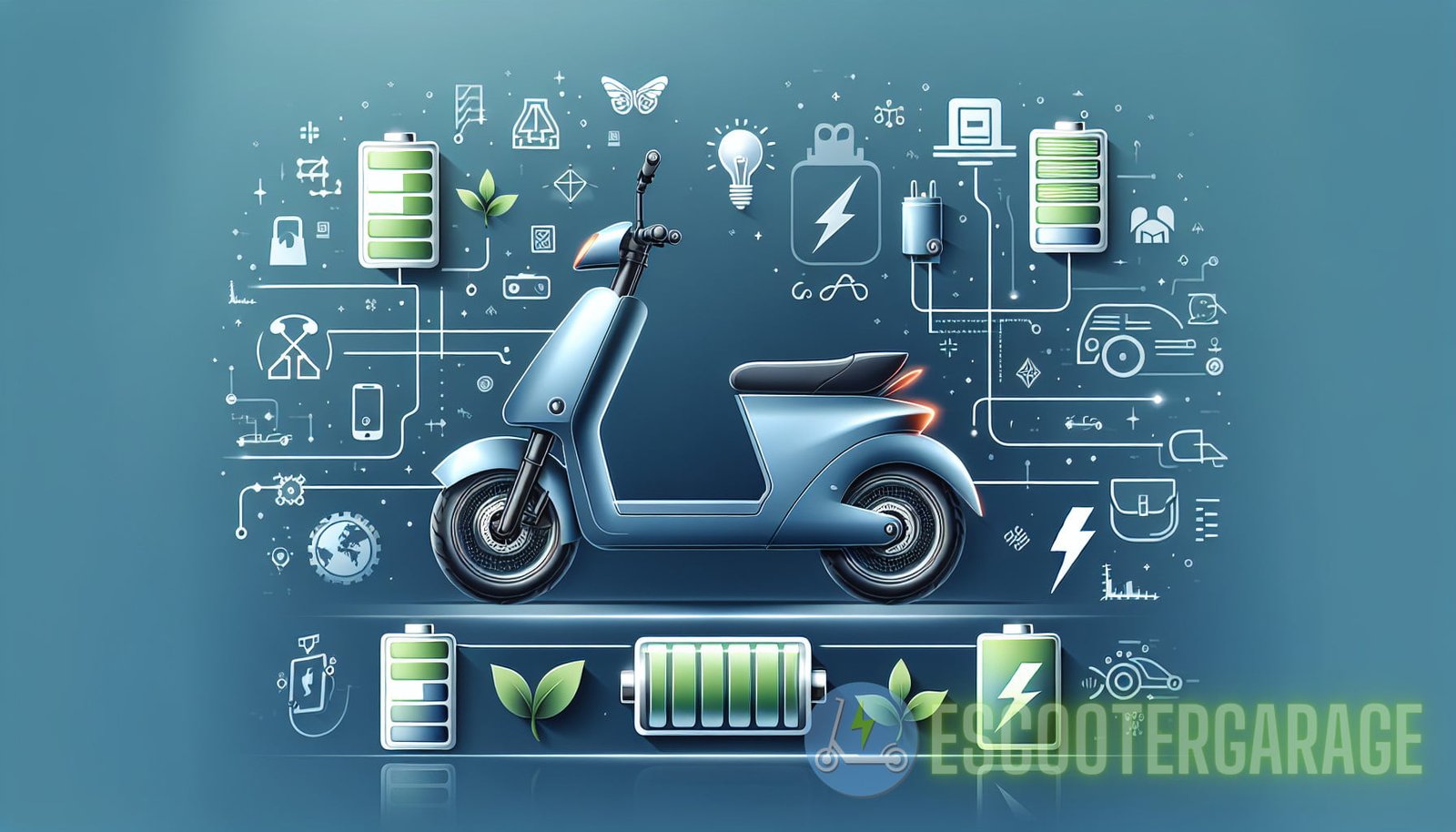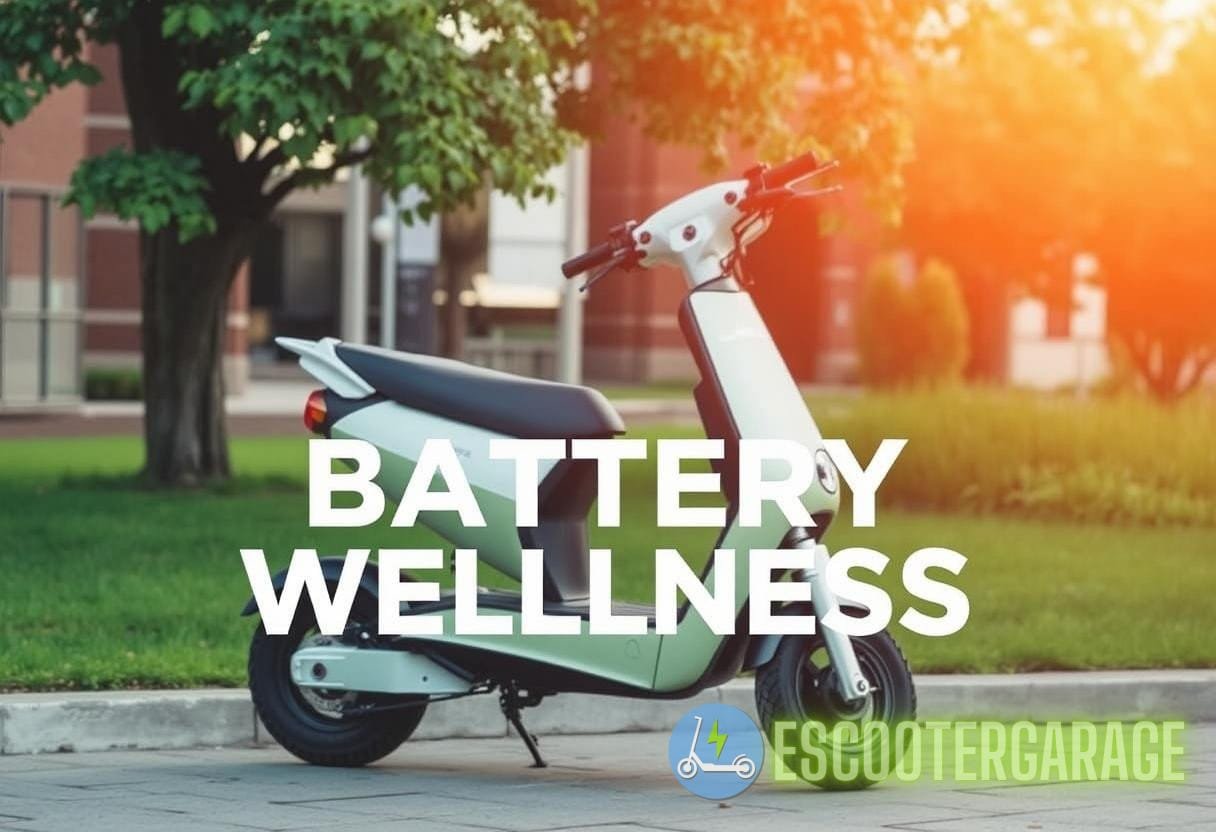Introduction
Scooters have become a popular mode of transportation in recent years, thanks to their convenience, affordability, and eco-friendliness. As the demand for electric scooters (escooters) continues to grow, so does the need to optimize their battery life. In this article, we will explore cutting-edge strategies for escooter battery optimization, ensuring optimal performance and extended battery life.
1. Battery Technology Advancements
Lithium-Ion Batteries
One of the significant technological advancements in battery technology is the use of lithium-ion batteries in escooters. These batteries offer numerous advantages over traditional lead-acid batteries, including a higher energy density, longer lifespan, and lighter weight. Lithium-ion batteries can also be recharged more quickly and provide consistent power throughout their discharge cycle.
Battery Management Systems
Battery management systems (BMS) play a vital role in optimizing escooter battery performance. A BMS ensures that each battery cell operates within safe voltage limits, monitors temperature, and balances the charge across all cells. This helps prevent overcharging, undercharging, and overheating, ensuring the longevity and efficiency of the battery.
Battery Cooling Systems
Heat is one of the biggest enemies of battery life. To combat this, some escooters are equipped with advanced cooling systems. These systems regulate the temperature of the battery, preventing it from overheating during extended rides or fast charging. By maintaining an optimal temperature range, the battery can perform at its best and maintain its longevity.
Regenerative Braking
Regenerative braking is a feature that allows escooters to recover and store some of the energy lost during braking. Instead of dissipating the energy as heat, regenerative braking converts it back into electrical energy and stores it in the battery. This feature not only helps extend the battery life but also improves the overall efficiency of the escooter.
2. Charging Best Practices
Avoid Overcharging
Overcharging is one of the most common causes of battery degradation. To optimize the battery life of your escooter, it is crucial to avoid overcharging. Most escooters have built-in charging protection, which stops the charging process once the battery reaches its full capacity. However, it is still advisable to unplug the charger as soon as the battery is fully charged.
Charge at Moderate Temperatures
Extreme temperatures can negatively impact battery performance and lifespan. It is recommended to charge your escooter battery at moderate temperatures, ideally between 59°F (15°C) and 77°F (25°C). Charging at higher or lower temperatures can result in reduced battery capacity and overall performance.
Avoid Deep Discharges
Deep discharges, where the battery is completely drained before recharging, can significantly impact battery life. It is best to avoid deep discharges whenever possible. Instead, aim to maintain a charge level between 20% and 80% for optimal battery health and performance. Some escooters even come with a battery management app that helps track and optimize charge levels.
Store at Appropriate Charge Level
If you’re not planning to use your escooter for an extended period, it’s essential to store the battery at an appropriate charge level. Most manufacturers recommend storing the battery between 20% and 80% charge. This helps prevent self-discharge and keeps the battery in good condition during storage.
3. Optimal Riding Habits

Avoid Constant Full Throttle
While it may be tempting to ride your escooter at full throttle all the time, it can significantly reduce battery life. Rapid acceleration and sustained high speeds drain the battery quickly. To optimize battery performance, try to maintain a steady and moderate speed, avoiding unnecessary bursts of acceleration.
Adjust Power Settings
Most escooters offer different power settings, allowing you to adjust the performance according to your needs. If battery optimization is a priority, consider using lower power modes when cruising or riding on flat terrain. By reducing the power output, you can extend the battery life and enjoy longer rides.
Plan Efficient Routes
Planning efficient routes can help minimize the distance traveled and reduce the strain on your escooter’s battery. Utilize navigation apps that offer the shortest or most efficient routes, taking into consideration factors such as elevation changes and traffic conditions. By minimizing unnecessary detours and uphill climbs, you can conserve battery power and prolong ride time.
Avoid Excessive Weight
Excessive weight can significantly impact escooter performance and battery life. Avoid carrying unnecessary items or overloading your escooter. The additional weight puts strain on the battery and motor, reducing overall efficiency. Keep your escooter lightweight, and remove any accessories or cargo that are not essential for your ride.
4. Regular Maintenance
Tire Maintenance
Proper tire maintenance is crucial for your escooter’s overall performance and battery optimization. Check the tire pressure regularly and maintain it at the manufacturer’s recommended level. Underinflated tires can increase rolling resistance, making the motor work harder and draining the battery faster.
Keep the Drive Train Lubricated
Lubricating the drive train, including the chain and gears, is essential for smooth operation and battery efficiency. Clean the drive train regularly and apply a suitable lubricant to reduce friction and ensure optimal power transfer. A well-lubricated drive train requires less energy to operate, resulting in improved battery life.
Inspect and Clean the Braking System
A well-maintained braking system not only ensures rider safety but also contributes to battery optimization. Regularly inspect your escooter’s brake pads, discs, and calipers for wear or damage. Clean any debris or dirt that may affect the braking performance. A properly functioning braking system reduces the need for excessive braking and regenerative braking, preserving battery power.
Keep the Battery Terminals Clean
Dirty or corroded battery terminals can hinder the flow of electricity and reduce battery performance. Clean the battery terminals regularly with a clean cloth or brush, ensuring a good connection between the battery and the escooter. This helps maintain optimal power transfer and extends the battery’s lifespan.
Conclusion
Optimizing the battery life of your escooter is not only beneficial for its overall performance but also for the environment and your wallet. By taking advantage of the latest battery technology advancements, following charging best practices, practicing optimal riding habits, and performing regular maintenance, you can ensure that your escooter battery performs at its best and lasts for years to come.
Remember, escooter battery optimization is an ongoing effort that requires consistent attention and care. By implementing the strategies discussed in this article and staying informed about the latest developments, you can maximize your escooter’s battery life and enjoy a smooth and reliable ride.
For additional maintenance tips and insights, check out these articles available at https://escootergarage.website/maintenance-tips/escooter-revolution/ and https://escootergarage.website/maintenance-tips/escooter-maintenance-2/.



